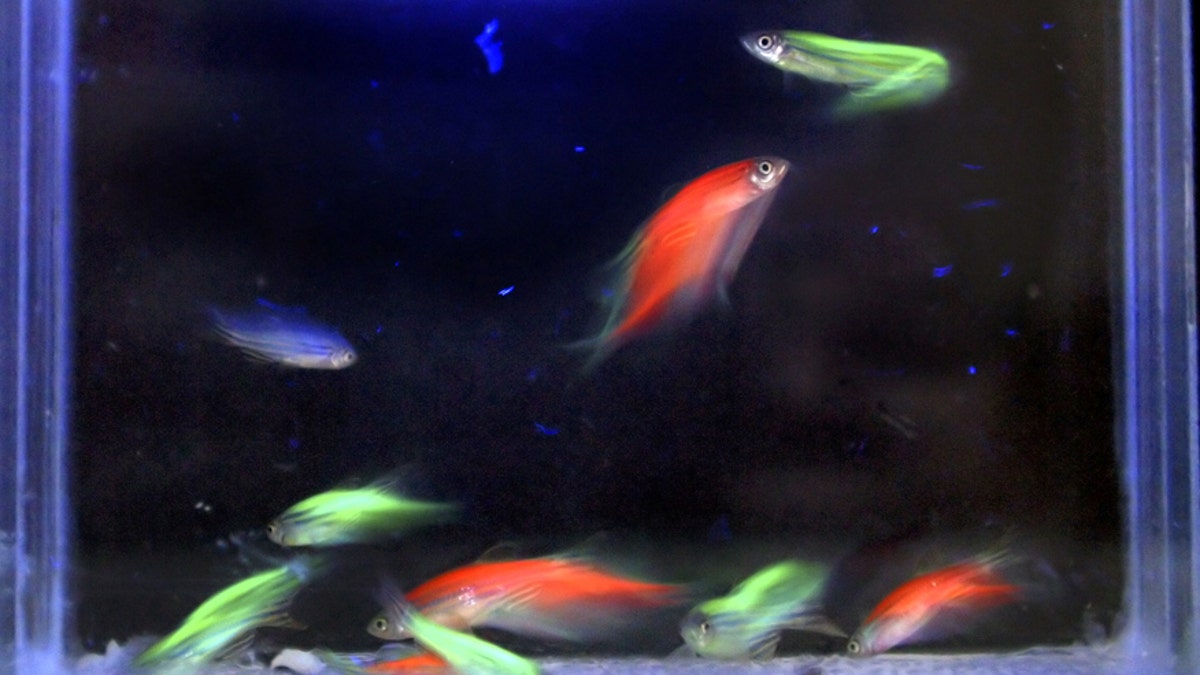Red fish, blue light: How glowing sea creatures change color

(AP)
Deep-diving fish have a problem: The only light that penetrates their watery environment is blue and green hardly enough of a palette for flashy color patterns.
Now, a new study reveals these fishes' solution: In deep water, fish simply fluoresce more a technique that allows them to convert blue-green light into red light.
"Under light conditions that do not provide the full spectrum the full rainbow of colors that we have at the surface it's really nice to have fluorescence, because you can still have those missing colors," said study researcher Nico Michiels, a professor at the University of Tebingen in Germany. [Gallery of Glowing Sea Creatures]
Fluorescing fish
Most color pigments work by absorbing some portions of the light spectrum and bouncing the rest back. A yellow flower, for example, absorbs blues, greens and reds, and sends yellow shooting back toward the eye of the observer.
Fluorescence is slightly different. The molecules responsible absorb one wavelength of light and then emit another, longer wavelength. This occurs through a process of excitation, in which the molecule absorbs light energy and then emits a lower-energy wavelength than the one it absorbed, in order to return to its resting state.
Many marine animals fluoresce, frequently in colors not visible to the human eye without filters. Researchers studying fluorescent corals have suggested that these colors might help protect against sun damage. Another theory holds that fluorescence provides marine organisms more freedom of color, thus enhancing communication and camouflage.
Deeper and redder
If fluorescence is mostly a tool used for UV protection, you'd expect to see more of it in shallow waters, where UV light can penetrate, Michiels told Live Science. On the other hand, if fluorescence is mostly a decorative, visual touch, it would be more likely to appear in deeper waters, where fish don't need UV protection but do have less of the visible light spectrum to work with.
Michiels and his colleagues dove to depths of 16 feet and 66 feet at sites in the Mediterranean Sea, Red Sea and East Indian Ocean. They collected specimens of eight species of fish known to fluoresce, including five types of gobies and a species of the long, slender seahorse relative known as the pipefish.
Back on land, the fish were housed in aquariums and tested for fluorescence the same day using a spectrometer, which measures the spectrum of light generated by an object. The measurements revealed that fish caught at depths of 66 feet fluoresced red more readily than fish of their same species caught at 16 feet below the water's surface.
"In some species, the difference is quite impressive," Michiels said. "Some of these species are six times more fluorescent in deeper water than in shallow water."
Red wavelengths of light are rapidly absorbed by water and aren't present in deep waters, Michiels said. Thus, traditional pigments would be useless for creating red coloration. Red pigments simply look gray without that portion of the spectrum to bounce off them, much like the clothes in your closet all look indistinguishably gray when you try to pick out a sweater without turning on the lights.
The fish "can use the ambient light, which can be blue or green it doesn't matter and transform it into red or yellow," Michiels said. The fish can be red in a blue environment, if they fluoresce, he added.
The researchers are now working to measure the fishes' fluorescence in their natural environment. They've also noticed that fish often have spots of fluorescence around their eyes. These spots could be used as a miniature personal light source, kind of like the headlights on a car, Michiels said. The next step, he added, is to find out if the fish really use their fluorescent spots in that way.
The researchers report their findings Tuesday in the journal Proceedings of the Royal Society B.



















